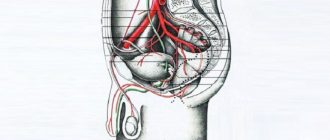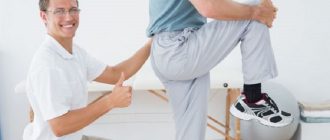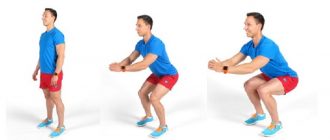Yoga for prostatitis and prostate adenoma is used as physiotherapy in treatment, helping to eliminate congestion and strengthen the muscles in the pelvis. The technique is also used as a general strengthening exercise and helps prevent the occurrence of these diseases. However, before starting training, it is necessary to consult a urologist, because there are contraindications. You can do the exercises at home, but first, it is advisable to visit an experienced trainer who can teach you the correct technique.
Is yoga good for men's health?
Yoga for male diseases is effective both in the prevention and treatment of existing diseases. In classes, emphasis should be placed on asanas that involve the lower part of the body.
Yoga treatment of prostatitis promotes:
- eliminating stagnant processes;
- improving blood circulation;
- strengthening the muscles of the perineum.
Contraindications
Despite the fact that yoga does not require significant physical activity and has a positive effect on the body as a whole, classes have a number of contraindications. Yoga therapy for prostatitis is prohibited for:
- Acute stage of the disease. Execution will be accompanied by pain.
- Elevated temperature. At this time, the body is weakened and you may lose consciousness.
- Diseases of the musculoskeletal system (spine, joints).
It is also not recommended to conduct independent training if:
- cardiovascular diseases. Exercise accelerates blood circulation; a weak heart may not be able to cope with the load;
- hypertension. Due to increased blood circulation, an attack is possible;
- stagnation of blood in the pelvis. Do not perform complex exercises with inversions.
In these conditions, it is recommended to conduct classes only under the supervision of a specialist who will recommend the necessary asanas and help you master the technique of performing them.
If discomfort occurs, you must stop exercising. Yoga classes for prostate adenoma or prostatitis require prior consultation with your doctor.
Exercises
Yoga exercises for prostatitis must begin with mastering the simplest exercises aimed at relaxing the body. They include breathing techniques, so training must be done in a well-ventilated area.
Yoga asanas for prostatitis include poses that are aimed at:
- warming up the muscles before performing more complex exercises;
- breathing exercises that help increase concentration when performing asanas and enrich the body with oxygen;
- strengthening the pelvic muscles;
- blood flow to the prostate.
To warm up
Before performing the main complex, you need to do a warm-up. First you need to do a few breathing exercises:
- Stand on the mat with your feet shoulder-width apart. While inhaling, slowly raise your arms and hold your breath for a couple of seconds. As you exhale, slowly lower them. Do this several times. You can alternately raise and lower your right and left arms.
- Take a slow breath and, holding your breath and clenching your fists, massage your thighs. Then slowly exhale and relax.
The most important thing in these exercises is to control your breathing.
To warm up the muscles:
- Sit on the mat and stretch your legs. Inhale slowly. As you exhale, bend forward. Trying to lie with your chest on your knees, with your elbows touching the floor. Hold for a few seconds. As you inhale, slowly return to the starting position.
- Stand up, leaning forward slightly, focusing on your hips, just above your knees. As you exhale, contract the muscles of the anus. As you inhale, relax. The main thing in the exercise is the correct bending with a straight back and control of breathing during squeezing.
- Stand on one leg, put your hands on your sides or spread them to the sides. Keep the other leg at a 90 degree angle. Mentally count to 10, then lift your leg until you feel slight resistance in your thigh muscles. Repeat 10 times, then do the same exercise on the other leg.
Main complex
After warming up the muscles and breathing exercises, you can begin the main activities:
- Sarvangasana (birch tree). Lie on your back near the wall, arms along your body. Relax, restore even breathing. Raise your legs on the wall, raising your pelvis as high as possible, and rest your palms on your back to support your torso. Remain still for as long as possible, remembering to breathe evenly.
- Mandukasana (frog). Stand in a knee-elbow position, place your hands in front of you. Spread your knees shoulder-width apart, your heels facing each other. Maintain the position for several minutes. With each subsequent execution, try to spread your legs wider.
- Baddha Konasana (butterfly). Sit on the floor with your knees bent. Connect your feet; to make it easier, you can clasp your ankles with your fingers. Hips should be lowered as low as possible. Keep your back straight and breathe as calmly as possible. Stay still for 30-60 seconds.
Advanced asanas
After mastering the initial asanas, you can proceed to more complex poses:
- Dhanurasana (bow pose). Starting position lying on your stomach. Place your hands behind your back and try to grab your ankles. Remain still for several seconds. Exhale, relax and take the starting position.
- Ardha baddha padma paschimottanasana. Twisting is done while sitting on the floor with your legs extended. The left leg is bent at the knee and pulled towards the stomach. We place our left hand behind our back and take ourselves by the toe of our left foot. We stretch the right one in front of us and, bending over, take ourselves by the toes of our right foot. We stretch our back up as much as possible and relax our neck. Then we lie down, trying to bend down as much as possible.
- You can also complicate the sarvangasana (birch) asana. To do this, the exercise is performed without leaning on the wall.
Breathing practices
Breathing exercises are done both before the main complex and after, for relaxation:
- Starting position: sitting on a mat on your knees. You should take a deep, slow breath and smoothly raise and lower your arms several times. Exhale slowly.
- Sitting in the same position, inhale slowly, holding your breath, raise your arms and slowly lean forward, trying to touch the floor. Exhale the moment your fingers touch the floor.
- Stand with your feet shoulder-width apart, take a deep breath and raise your arms above your head. Then make several bends to the sides and, as you exhale, take the starting position.
Mudras
This is what finger gymnastics is called. Mudras for prostatitis are best used in combination with asanas. It is believed that they help direct the body's energy into the right channels.
For prostatitis and prostate adenoma, the following mudras are recommended:
- Kamadhenu. It is necessary to connect the little finger of the left hand with the ring finger of the right, and the index finger with the middle one. Thumbs should be spread wide. Breathing should be smooth. You can do this 3 times a day for 15 minutes.
- Maha sacral. You need to take a comfortable position and relax. Place your palms at chest level, connect the pads of your ring fingers, then your thumbs and little fingers. Maintain the position of your fingers and take 10 slow breaths. Then connect your thumbs and ring fingers and again take 10 breaths.



